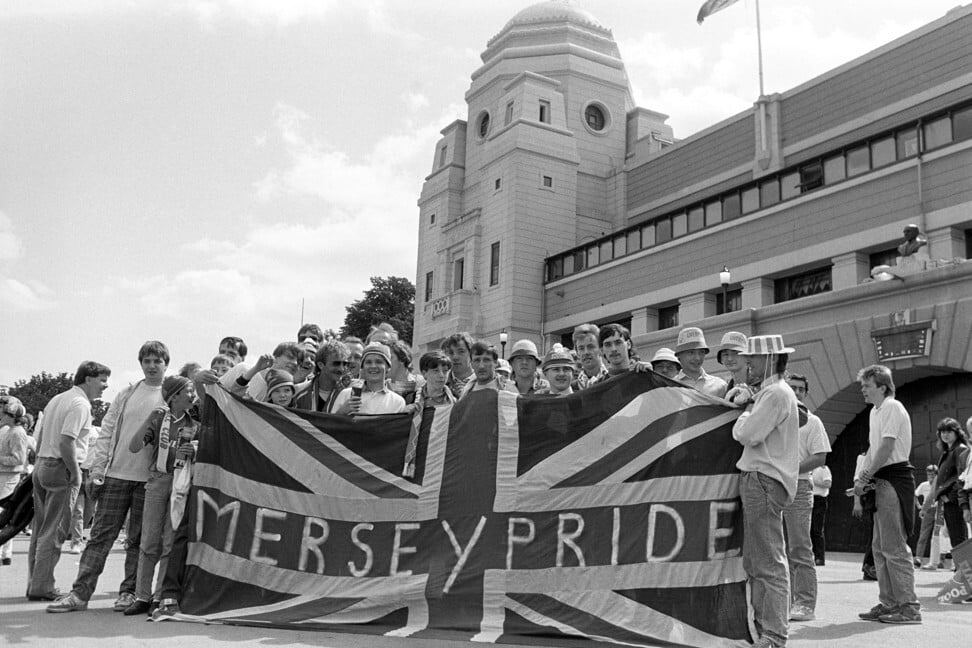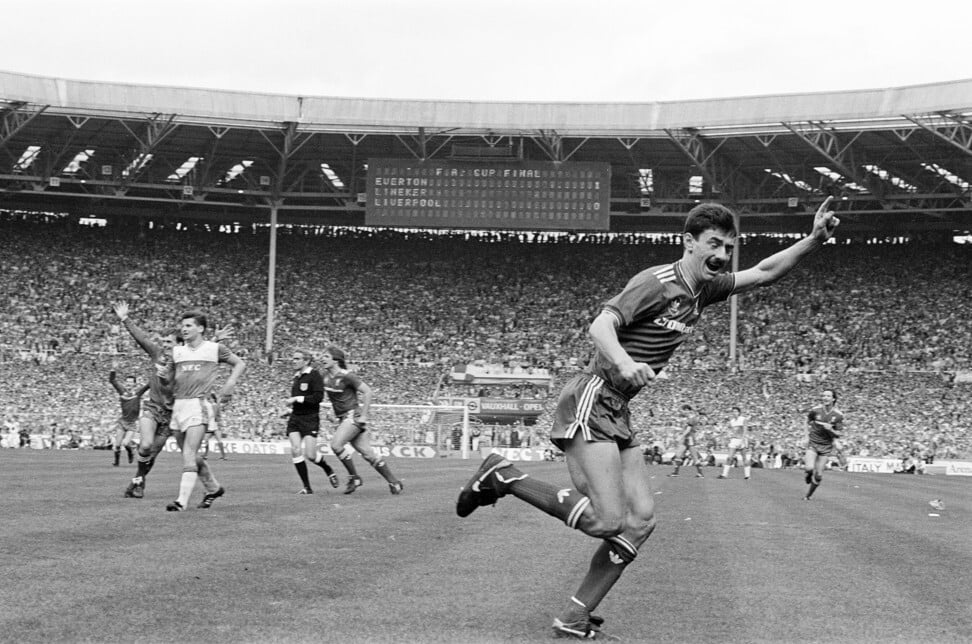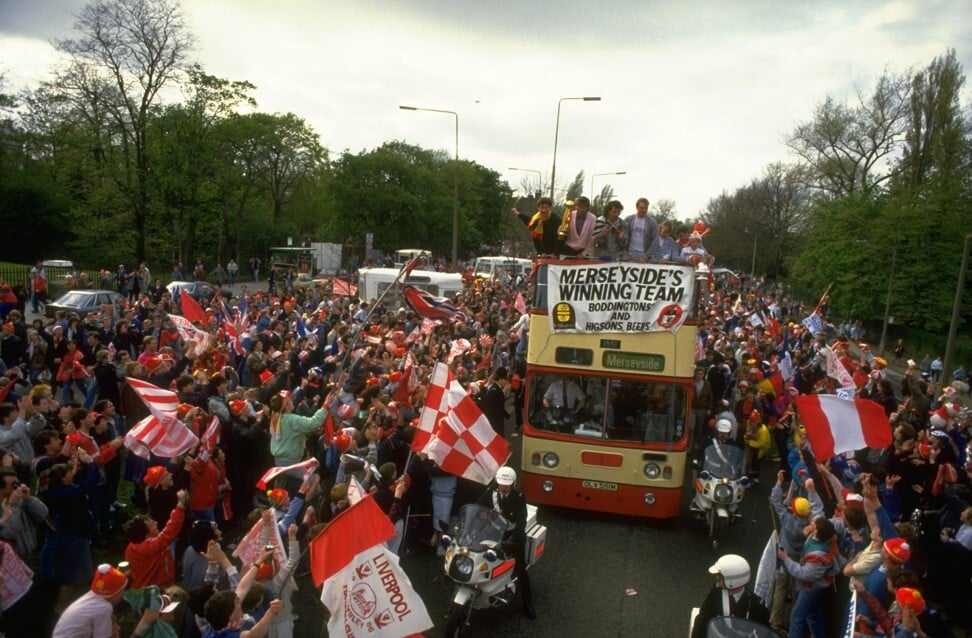
Liverpool’s greatest day: driving an open-top bus through Everton’s hopes and dreams in 1986
- It was an occasion which went some way to repairing the damaged reputation of people, specifically Liverpool supporters, in Merseyside
- The 1986 FA Cup final was the denouement to a restorative season for English football
The most important game in Liverpool’s history took place on May 10, 1986. Kenny Dalglish’s team beat Everton 3-1 at Wembley in the FA Cup final and sealed Anfield’s only league and cup double. There was more than silverware at stake. The match helped salvage the honour of a city and restore faith in the game.
For the Kop it remains a glorious memory. Everton and their followers emerged from the day with their reputation enhanced but the sting of humiliation still lingers at Goodison.
Just 12 months earlier, 39 people were killed before the European Cup final between Liverpool and Juventus in Brussels. A number of factors caused the disaster at the Heysel Stadium but paramount among them was the behaviour of Liverpool fans. A wall collapsed when hundreds of predominantly Italian supporters fled an outbreak of violence, resulting in a fatal crush.
The tragedy provoked worldwide horror and had significant consequences. English clubs were banned from international competition. Everton had won the title and the Cup Winners’ Cup in the weeks preceding the disaster but Howard Kendall’s brilliant side were unable to test themselves against the continent’s best teams in the European Cup. They were collateral damage in a bigger catastrophe.

It was the age of hooliganism’s lowest point. The public appetite for football hit an all-time low. There were dire predictions for the future and attendances at the start of the 1985-86 season seemed to confirm the darkest forecasts. The Sunday Times called the game “a slum sport played in slum stadiums increasingly watched by slum people, who deter decent folk from turning up.”
Remarkably, the 1985-86 campaign turned out to be one of the most uplifting in history, perhaps because expectations were so low. The title race was wide open right until the end, with Liverpool edging out Everton and West Ham United on the final day of the season. Dalglish’s team were 11 points behind their neighbours in early March but clawed back the deficit. The league season was thrilling. The Merseyside cup final was the encore everyone wanted.
The eyes of the world were on Wembley. Liverpool fans in Belgium had tarnished the reputation of the entire city. Merseyside was not well regarded in the rest of England, either. Politically, the region was out of step with the policies of Margaret Thatcher’s Conservative government and the local council was embroiled in a battle with Westminster over funding. Unemployment was reaching record levels and Scousers were demonised as being work-shy, disruptive and violent, whichever team they supported. There were serious questions about whether it was a good idea to allow 100,000 Merseysiders to congregate in north London for the final.
The afternoon at Wembley confounded the expectations of those who believed the worst of Liverpool and Everton supporters. The game was tense. Gary Lineker gave the Blues a first-half lead and the second period was filled with drama. Dalglish’s men appeared to lose their discipline – Bruce Grobbelaar, the goalkeeper, and full back Jim Beglin became involved in a shoving match – before staging a magnificent comeback. Ian Rush scored twice either side of a Craig Johnston goal to seal the victory. The game was a fitting finale to an exhilarating season but it was the fans who captured much of the attention.

Both sets of supporters combined after the final whistle in a show of unity that will probably never be replicated. As the teams performed a lap of honour the chant of “Merseyside” rose from the terraces and echoed around the stadium. The display of sportsmanship confounded expectations and won universal praise. It did much to rehabilitate the image of the city and the game.
But when the applause ended and the stadium emptied, the ordeal of the Everton players was only just beginning. The next 24 hours was a miserable experience for Kendall’s team.
In the wake of Heysel and the negative attention on the city, the two clubs and civic leaders wanted to continue the theme of togetherness for the homecoming. The plan was for the teams to fly back from London in the same plane and parade through the streets on two open-top buses.
A similar scenario had been proposed two years earlier when Liverpool and Everton contested the League Cup final. The idea was simple: victors went first, the defeated side behind. Kendall was having none of it in 1984. “We thought the winners would take the lead bus and the losers follow on,” Derek Hatton, the deputy leader of Liverpool city council at the time and a fanatic Evertonian, said. “Then Howard said to me: ‘If you think we’re going behind those red b******s if we lose, you can **** off!’ He wasn’t giving an inch.”

In 1986, the circumstances had changed and the Everton manager took a softer line and agreed to the joint show of strength after the return from Wembley. It was a decision he would regret.
Peter Reid, one of the Scousers in the Everton team, could not stomach the thought of travelling back with his victorious rivals. Players from both sides socialised together but for Reid friendship only went so far. At the post-game banquet at Everton’s hotel, the man from Huyton made a decision. “I had a drink with the boys and got off,” Reid said. “I got my mate to pick me up. I didn’t do the bus parade. Howard said he’d fine me two weeks’ wages. I said ‘that’ll do me’ and pissed off. I watched the parade from a pub in Bolton.”
On the Sunday morning after the final, the players trooped on to the plane. The Liverpool squad had been carousing all night and continued their festivities. Their Everton counterparts had painful, sour hangovers. “I couldn’t believe what they made us do,” Graeme Sharp, the Everton striker, said. “It was unbelievable. On the plane Liverpool were all celebrating and we were sitting there miserable.”
Reid and Sharp can laugh ruefully about the situation today. Liverpool players, by contrast, have never stopped sniggering. They enjoyed the discomfort of their mates and arch-rivals. “They were fuming,” Mark Lawrenson said. “We were on the first bus, the journalists on the second. Everton were on the third.”
Steve Nicol was equally ebullient. “We had the trophies,” the Scot said. “All Everton had was a few cans of ale.”

The final indignity for the losing side came as the seemingly never-ending bus tour dragged on. Kendall’s team took solace in beer. There was, however, no toilet on their transport. “All the boys were trying to do it in cans,” Sharp said. “I couldn’t do that. I said to the driver to stop for a minute on Queens Drive and got off.” This was one of the city’s main routes, lined with semi-detached houses. The striker looked around for a place to urinate.
“There was a woman in her doorway waving at us so I went over and asked her if I could use her toilet,” Sharp recalled. “She sent me upstairs and when I came out there was a queue down the stairs with the rest of the team waiting to use it.” This was just about the only relief Sharp had all day. His team-mates got no such satisfaction.
The parade was televised but the cameras mainly focused on the Liverpool bus. Someone must have noticed a commotion around the Everton transport and the pictures of the queue of desperate players were beamed to the watching public. One viewer took offence. “The woman’s husband was sitting in the living room watching it on telly,” Sharp said. “He saw us going into his house. He was a Red and the next thing he’s running up the stairs kicking us all out. I was the only one who got to use the toilet.”
It felt like Everton’s entire season had been flushed away while Liverpool hit the highest point in their history. Among Anfield’s many achievements, bouncing back from Heysel by doing the Double – in Dalglish’s first year as a manager – ranks as the greatest.
The reality is that there were bigger issues at stake than the success of individual clubs. Everton’s role in rescuing the image of the game during this very dark period should never be underestimated. Their players and fans earned huge amounts of respect but Kendall’s side were the finest in Goodison history and deserved more than being an afterthought in Liverpool’s convoy of glory. Especially after being stopped from competing in the European Cup through no fault of their own. No wonder Reid, Sharp and their team-mates recall those two days in May with a shudder.
Everton played an crucial role in what was arguably Liverpool’s greatest day. Any unpleasantness or poor sportsmanship during or after the final would have been seized upon by the enemies of the city. In the end, Dalglish’s team drove a bus through Kendall’s hopes and dreams. No wonder they still relish the memory at Anfield.
Help us understand what you are interested in so that we can improve SCMP and provide a better experience for you. We would like to invite you to take this five-minute survey on how you engage with SCMP and the news.

